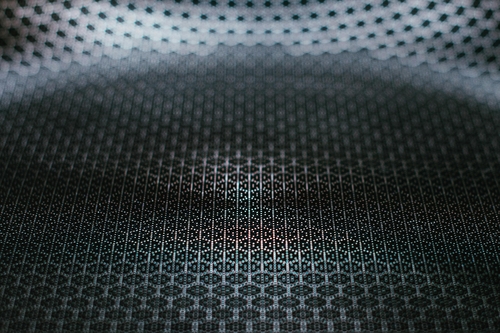 Zapier Automation – Automate Publishing. Free Your Time!
Zapier Automation – Automate Publishing. Free Your Time!
Exploring the Expanding Microfiltration Membrane Market: Key Drivers and Challenges
Written by santosh kumar » Updated on: June 17th, 2025

The Microfiltration Membrane Market has witnessed remarkable growth over the past decade, driven by increasing demand across industries such as water treatment, food and beverage, pharmaceuticals, and biotechnology. With the rising focus on sustainability and stringent environmental regulations, these membranes are gaining popularity for their ability to provide efficient, cost-effective, and eco-friendly filtration solutions.
What are Microfiltration Membranes?
Microfiltration membranes are porous structures used to separate particles ranging from 0.1 to 10 microns in size. They function primarily in removing suspended solids, bacteria, and some viruses from liquids or gases, making them an indispensable tool in filtration processes.
These membranes are often made from materials like polyvinylidene fluoride (PVDF), polypropylene (PP), and polyethersulfone (PES), known for their durability, chemical resistance, and high-performance efficiency.
Key Drivers of Market Growth
Rising Demand for Clean Water
With the global population increasing and water scarcity becoming a major issue, microfiltration membranes play a crucial role in wastewater treatment and desalination projects. Governments worldwide are investing heavily in water infrastructure, propelling the market further.
Stringent Environmental Regulations
Regulatory bodies such as the U.S. Environmental Protection Agency (EPA) and the European Union have imposed strict standards for wastewater discharge, forcing industries to adopt advanced filtration technologies.
Advancements in Membrane Technologies
Ongoing R&D in membrane material science has resulted in higher durability, improved permeability, and reduced fouling. These innovations enhance the operational efficiency of microfiltration systems.
Expanding Pharmaceutical and Biotechnology Sectors
The pharmaceutical industry relies heavily on microfiltration membranes for applications like sterile filtration and cell harvesting. With the growing demand for biologics and vaccines, this sector has become a significant driver for the market.
Food Safety and Quality Standards
In the food and beverage industry, microfiltration membranes ensure product consistency and safety by removing contaminants, bacteria, and particulates during production processes. This is particularly critical for dairy, beverages, and brewery applications.
Market Segmentation
By Material
Polyvinylidene Fluoride (PVDF):
Known for its chemical resistance and durability, PVDF membranes dominate the market, particularly in water and wastewater treatment applications.
Polyethersulfone (PES):
PES membranes are favored in medical and biopharmaceutical applications due to their low protein-binding properties.
Others:
Materials like polypropylene and cellulose acetate are also widely used across various niche applications.
By Application
Water & Wastewater Treatment:
The largest segment, driven by the growing need for clean drinking water and industrial wastewater management.
Food & Beverage:
Applications include filtration of milk, juices, and beer to ensure product quality and compliance with safety standards.
Pharmaceutical & Biotechnology:
Used in drug formulation, sterilization processes, and filtration of biologics.
Industrial Processes:
Includes use in microelectronics, chemical processing, and other industrial applications.
By Region
North America:
A mature market with significant investments in water infrastructure and technological advancements in the pharmaceutical sector.
Asia-Pacific:
The fastest-growing region due to rapid industrialization, urbanization, and demand for clean water in countries like China and India.
Europe:
Stringent regulations for water treatment and sustainable industrial practices drive the market in this region.
Rest of the World:
Includes emerging markets in Latin America, the Middle East, and Africa, where water scarcity and infrastructure development are key growth drivers.
Challenges in the Microfiltration Membrane Market
High Initial Investment:
The setup cost of advanced filtration systems can be a barrier, especially for small and medium-sized enterprises.
Membrane Fouling:
Despite advancements in anti-fouling coatings, membrane clogging remains a significant challenge, affecting efficiency and increasing maintenance costs.
Competition from Alternative Technologies:
Ultrafiltration and nanofiltration membranes, which offer finer filtration, pose a competitive threat to microfiltration systems.
Economic Instability:
Fluctuating economic conditions in developing regions can impact infrastructure investments and slow market growth.
Emerging Trends
Eco-Friendly Membrane Manufacturing:
With sustainability becoming a priority, manufacturers are exploring biodegradable and recyclable membrane materials.
Integration of AI and IoT:
Smart filtration systems equipped with IoT sensors and AI algorithms enable real-time monitoring and predictive maintenance, enhancing operational efficiency.
Hybrid Filtration Systems:
Combining microfiltration with other filtration technologies, such as reverse osmosis or ultrafiltration, offers enhanced performance and versatility.
Focus on Energy Efficiency:
Energy-efficient membrane systems are gaining traction, especially in regions with high energy costs and stringent environmental regulations.
Competitive Landscape
Key players in the microfiltration membrane market include:
Pall Corporation: Renowned for its innovative membrane technologies in healthcare and industrial applications.
Merck Millipore: A leader in pharmaceutical and biotech filtration solutions.
GEA Group: Specializes in food and beverage applications.
Koch Separation Solutions: Offers advanced wastewater treatment systems.
Toray Industries: Focuses on water desalination and wastewater recovery systems.
These companies are actively investing in R&D to develop advanced membranes, expand production capacities, and penetrate emerging markets.
Future Outlook
The microfiltration membrane market is poised for significant growth, with a compound annual growth rate (CAGR) of approximately 8% from 2023 to 2030. Key drivers include the increasing focus on sustainability, technological advancements, and the rising demand for clean water and high-quality products in pharmaceuticals and food industries.
As industries continue to embrace efficient and eco-friendly solutions, microfiltration membranes will remain at the forefront of innovation, transforming how we manage resources and protect the environment.
Conclusion
The global microfiltration membrane market is more than just a component of filtration systems; it is a critical enabler of sustainability and industrial efficiency. From addressing water scarcity to ensuring food safety and advancing healthcare, the applications of these membranes are vast and impactful. By overcoming challenges and embracing innovation, the market is set to thrive, shaping a cleaner and more sustainable future.
Note: IndiBlogHub features both user-submitted and editorial content. We do not verify third-party contributions. Read our Disclaimer and Privacy Policyfor details.
Copyright © 2019-2025 IndiBlogHub.com. All rights reserved. Hosted on DigitalOcean for fast, reliable performance.

















